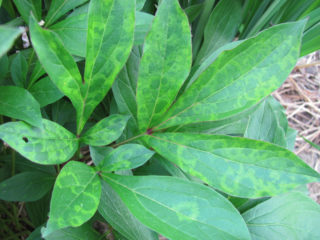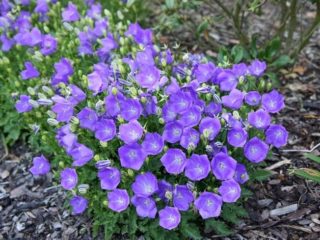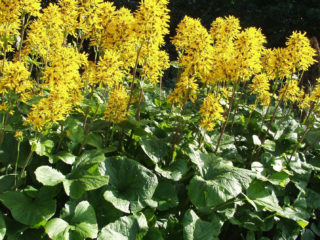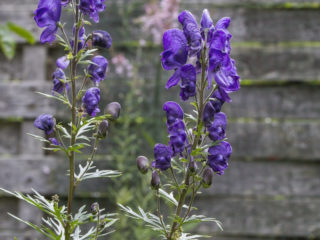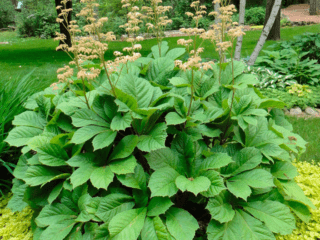Content
Lilies in Siberia can be grown very successfully, despite the difficult climatic conditions of this region. To do this, you only need to choose the right types and varieties of perennials and provide care that can maintain the viability and frost resistance of plants at a high level. Then the lilies will be able not only to survive successfully, despite harsh winters, but also to bloom profusely for many years.
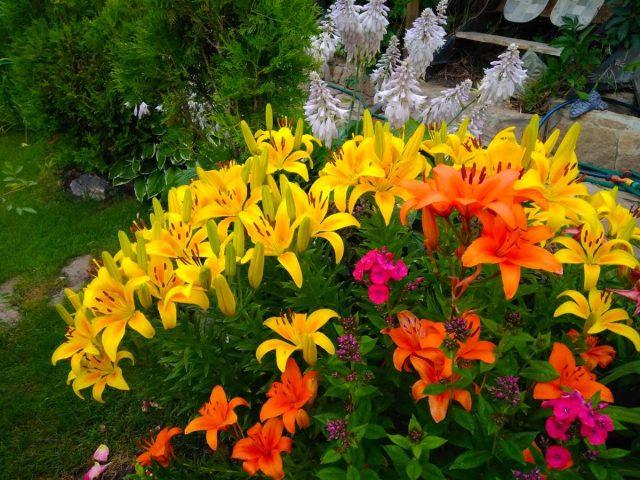
These perennials prefer nutritious soil
Climatic features of the region
The climate of Siberia is continental and sharply continental, with strong differences in annual and daily temperatures. This means that winters here are harsh, snowy, lasting at least six months, and summers are short and hot. Transitional seasons, such as spring and autumn, are less pronounced.
But the main advantage of the Siberian climate is that there is a fairly thick snow cover of about 20 cm, which protects the bulbs from freezing, as well as low air humidity, which increases their resistance to fungal diseases.
Varieties of lilies for Siberia with photos and names
Taking into account the difficult weather conditions of the region, it is necessary to choose perennial varieties that not only have high frost resistance, but also early flowering. After all, many hybrids, although they are able to survive in Siberia, due to the late onset of warm weather, they do not have time to bloom during the short summer.
Experienced gardeners recommend giving preference to unpretentious Asiatic lilies, lilies or curly lilies, as well as LA hybrids. These species do not require complex care, winter well in open ground, bloom profusely and reproduce easily.
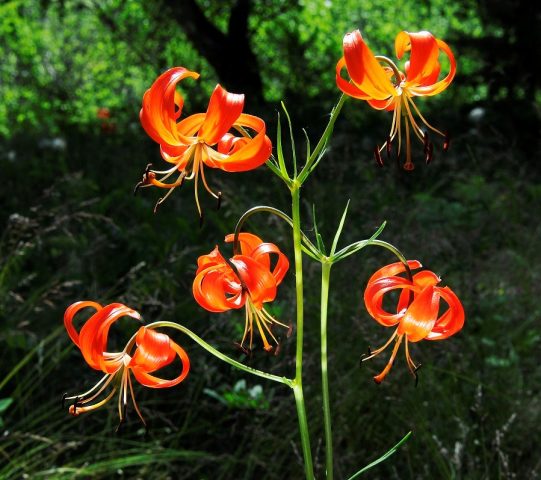
Among the variety of varieties, there are some that are most often chosen by gardeners in Siberia
Annemarie Dream
The height of this Asiatic lily barely reaches 90 cm. It is characterized by high frost resistance at -30 ° C and low susceptibility to fungal diseases. The Annemarie’s Dream variety has double snow-white flowers, consisting of 12 petals with a wavy edge, which are collected in 2-3 circles. When fully opened, the diameter of the bud is 15 cm. When this lily is grown in Siberia, the flowering period begins at the end of July and lasts two weeks.
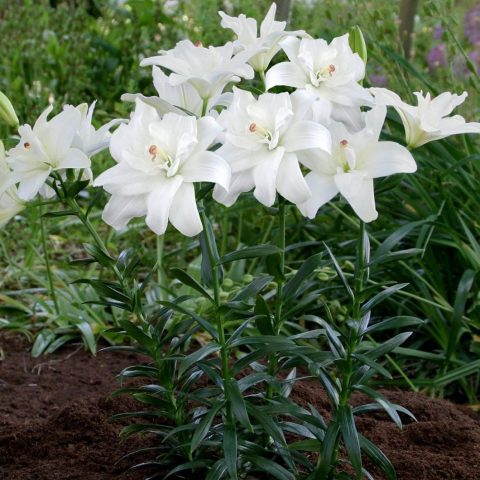
During the season, the Annemaris Dream variety produces up to 12 buds
Fata Morgana
Asian double lily. The color of the flowers is bright yellow. But at the same time, each diamond-shaped petal has dark specks at the anthers and a wavy edge. The height of the Fata Morgana lily reaches 1 m. At the top of the shoot, 9-12 buds are formed, the diameter of which when opened is 12-15 cm. The frost resistance of the variety is -34 ° C.The flowering period in Siberian conditions begins in the third decade of July and lasts about 20 days.
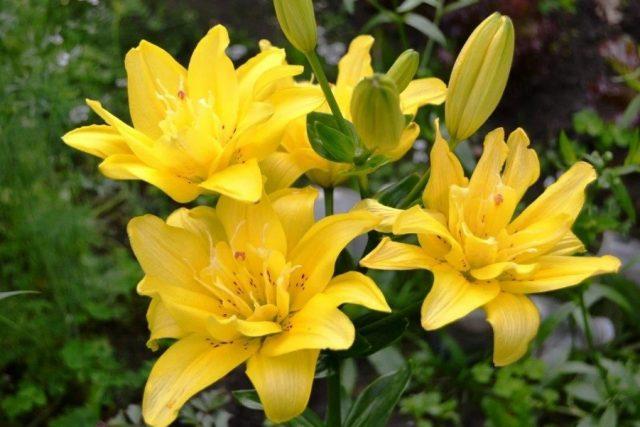
The Fata Morgana variety is resistant to rain
Landini
An original Dutch variety of Asiatic lily. A distinctive feature is the dark burgundy color of the flowers. The height of the plant reaches 100 cm. The diameter of the buds when fully opened is 16 cm. 7-8 buds are formed on the shoot.
Frost resistance of the Landini variety is at -30 °C. Its flowers exude a delicate aroma. When planting the species in a shaded area, the shade of the buds becomes almost black.
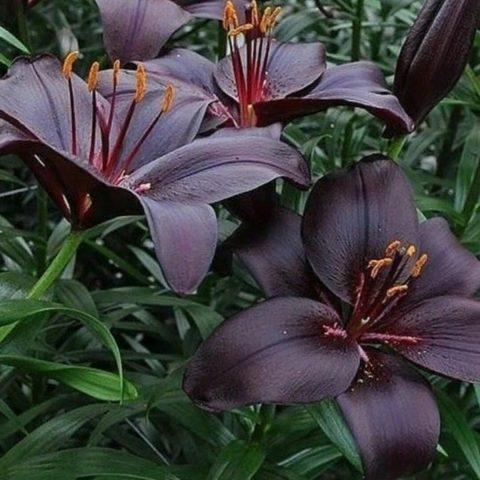
The Landini variety looks great in group plantings with light lilies
Guybed
This lily belongs to the saranka group. The height of the plant reaches 140-150 cm. Up to 20 small buds are formed at the top of a strong shoot. The flowers have a variegated color. The shade varies from raspberry pink to pale yellow.
The dark red specks on the petals stand out well, the stamens are orange. In Siberian conditions, the Gaybird variety blooms at the end of June and continues for four weeks.
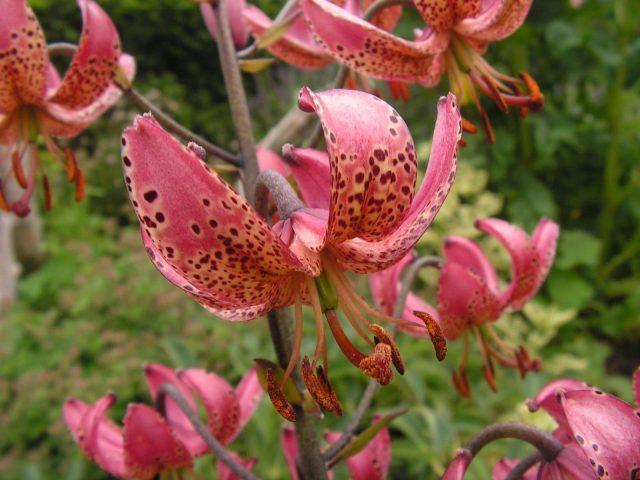
The Gaibed variety does not need frequent replanting
Arabian Knight
Another variety of lily lilies. Its turban-shaped flowers have a mahogany hue. At the base of the petals, a yellow tone predominates, on which small dark specks clearly stand out.
The Arabian Knigh variety blooms profusely; up to 50 buds are formed on the shoot. Flowering begins at the end of June and lasts more than 20 days.
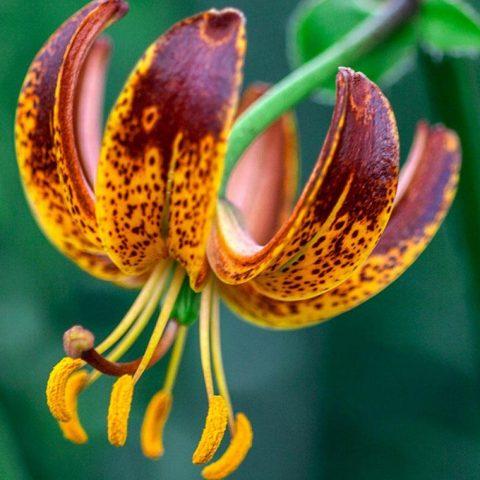
Lily Arabian Knight can withstand frosts down to -40 °C
Arbatax
This lily is from the category of LA hybrids. The height of its shoots varies from 90 to 130 cm. 3-6 buds are formed on each of them. The diameter of the flowers reaches 17 cm. They have a bright pink color with a white spot in the center and exude a pleasant, delicate aroma.
The frost resistance of the Arbatax hybrid aircraft is -28 °C. Flowering occurs in Siberia in early July and lasts 15-17 days.
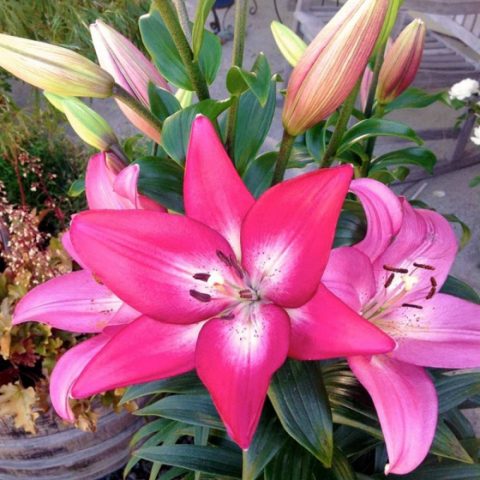
The Arbatax lily has inflorescences directed to the sides
Royal Sunset
A bright variety of culture belonging to the group of LA hybrids. Her flowers are large, up to 17 cm in diameter. The height of the Royal Sunset lily reaches 110 cm. The shoots are strong and can easily withstand the load of buds. The flowers are cup-shaped, forming wide, pointed petals. 5-7 buds are formed at the top of the shoots. The first of them begin to bloom in Siberian conditions at the end of June. The color of the lily is yellow with red-orange edges of the petals and dark specks.
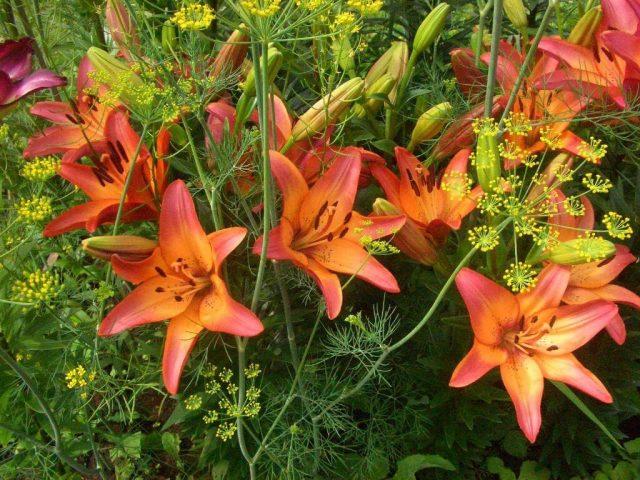
Lily Royal Sunset is demanding on soil composition
When to plant lilies in Siberia in spring and autumn
Planting perennials can be done in spring and autumn. In the first case, it is recommended to plant lilies when the soil warms up to +10 °C to a depth of 10 cm, but before the dry period begins. Therefore, the optimal period in spring is mid-May. If the deadlines are delayed, the plants will take a long time to adapt.
In the second case, it is recommended to plant perennials when the air temperature has already dropped noticeably, but there are still at least three weeks left before the onset of stable frosts. Therefore, it is recommended to plant in mid-September. When planted in autumn in Siberia, lilies only take root, and with the arrival of spring warmth they begin the growing season. In this case, the plants bloom profusely in the next season.
How to plant lilies in Siberia correctly
Knowing how to properly plant lilies in spring and autumn in Siberia, you can count on the fact that perennials will quickly adapt and begin to grow. Therefore, it is worth familiarizing yourself with the features of this procedure in advance.
Lilies prefer slightly shaded areas, protected from cold gusts of wind. It is important that the soil is loose, nutritious, and low in acidity. Two weeks before planting perennials, the area needs to be dug up, perennial weeds removed, 10 kg of humus and 200 g of wood ash added per square meter. m. After this, the soil must be carefully leveled.
Before planting, the bulbs need to be prepared in advance. To do this, you need to sort through them and immediately reject all damaged copies. After this, it is recommended to soak the planting material in Maxim’s solution for half an hour and then dry it slightly. The planting depth of the bulbs should be three times their diameter.
For lilies, a strip planting scheme is recommended. Tall species are recommended to be planted in single rows, with a distance of 50 cm between them. The distance between the bulbs should be 15 cm. Medium lilies are recommended to be planted in double rows at a distance of 25 cm, with a distance of 25 cm between the bulbs. In this case, ribbons should be made distance 70 cm.
Low-growing lilies in Siberia must be planted in a three-line strip pattern. Plant the bulbs every 15 cm and maintain the same distance between the rows. It is recommended to make tapes in increments of 70 cm.
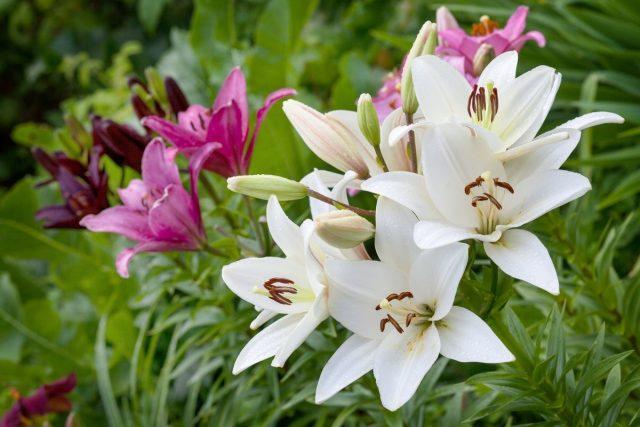
Lilies do not tolerate wetlands
Care instructions
This perennial does not require complex care. However, there are some agricultural technology features that must be followed.Since the viability of perennials and their abundance of flowering directly depend on them.
Lilies belong to the category of plants that tolerate a lack of moisture better than its excess in the soil. Therefore, it is recommended to water perennials in doses only during a long absence of precipitation. Moisturizing must be done at the root, avoiding water getting on the leaves.
Also, caring for lilies in Siberia involves timely removal of weeds and loosening of the soil. This will preserve air access to the bulbs and ensure the full development of plants. During particularly hot periods, it is recommended to mulch the soil at the base of the shoots with peat.
Lilies need proper feeding; it needs to be done three times a season. It is recommended to fertilize perennials for the first time at the end of May. To do this, you can use nitroammophoska at the rate of 30 g per 10 liters of water. In the future, fertilizing is necessary at the stage of bud formation and after flowering. For them you need to use potassium monophosphate at the rate of 10 g per bucket of water.

At the end of summer, at the beginning of autumn, when the shoots of lilies begin to dry out, they must be cut to a height of 15 cm
Lilies form daughter bulbs as they grow. They gradually increase in diameter and require sufficient free space. Therefore, every 5-7 years, depending on the type, it is recommended to plant lilies in the fall in Siberia. This should be done in mid-September so that the divisions can take root in a new place before the onset of frost. In spring, this procedure is not recommended, as it leads to disruption of the growth of the uterine bulb, which negatively affects its flowering.
How to prepare lilies for winter in Siberia
To prevent lilies in Siberia from being damaged in winter, they need to be prepared for a long cold period. To do this, in mid-October it is necessary to completely remove the remaining stump of the shoot and sprinkle the perennials with dry leaves or spruce branches. You also need to additionally cover them with film on top, since lilies overwinter better in dry soil.

It is necessary to remove the cover in the spring, as soon as the snow melts
Diseases and pests
Lilies, which are recommended to be grown in Siberia, have not only high frost resistance, but also low susceptibility to diseases. However, inconsistency in the rules of care leads to a decrease in their immunity. Therefore, perennials can be affected by fusarium, gray mold, anthracnose, cercospora, and rhizoctonia.
In order to prevent damage, it is recommended to spray the shoots of perennials several times a season with Bordeaux mixture, Hom, Fundazol, and also water them with Previkur Energy, Maxim, Fitosporin.
Among the pests that can annoy lilies are aphids, wireworms, lily flies, and squeak beetles. Therefore, when alarming signs appear, you need to use Actellik, Fitoverm, Iskra for treating the above-ground part, as well as Aktar for watering.

When repeating treatments, it is recommended to alternate medications
Conclusion
Lilies in Siberia fully develop and bloom profusely, despite the difficult weather conditions of the region. However, for this you need to take a responsible approach to choosing varieties. Otherwise, growing them does not require complex actions. Therefore, even novice gardeners can cope with this task.

